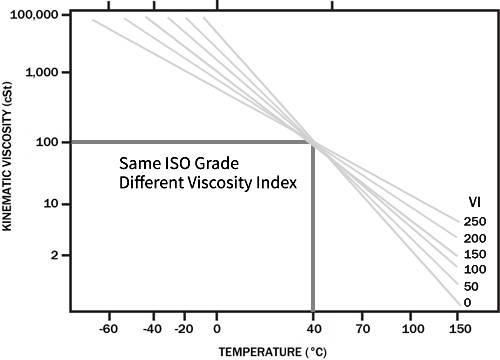Viscosity Index and what you need to know
The viscosity of an oil decreases as temperature increases. The degree to which the viscosity decreases determines the Viscosity Index (VI). The higher the viscosity index, the lower the change in viscosity. That is, oil with a high VI will retain their viscosity over a wider temperature range and work as designed in both hot and cold environments.
A higher VI is important when your machine will experience a big change in operating temperatures. Oil needs to flow when cold, but not get too thin and runny when it's warm. If you know the viscosity of your oil at 40ºC and 100ºC (100ºF and 212ºF) you can easily calculate its Viscosity Index.
Higher quality oils tend to have higher viscosity indices, and while there are ranges in every category, a synthetic oil will tend to have a much higher viscosity index than its conventional counterpart.
Viscosity Index Calculator
This calculator uses centiStokes (cSt), which are equivalent to mm^2/s. If you have the viscosity in centiPoise, divide the centiPoise value by the oil's viscosity to get centiStokes.

This calculator follows ASTM D2270 - 10 (Reapproved 2016), Standard Practice for Calculating Viscosity Index from Kinematic Viscosity at 40ºC and 100ºC
Viscosity Index is rounded to the nearest whole number. If halfway between (i.e. 13.5) it is rounded to the nearest even number. For example: (13.5 --> 14, 14.5 --> 14, 15.5 --> 16)